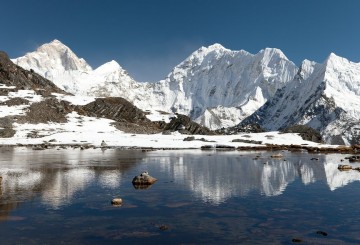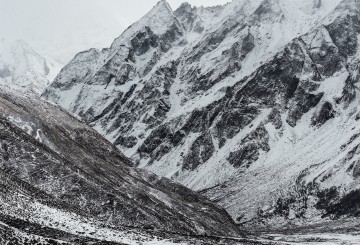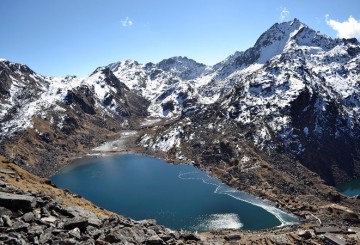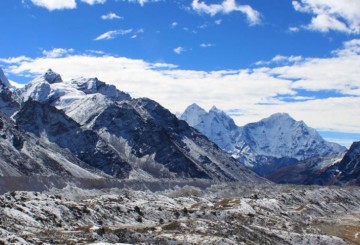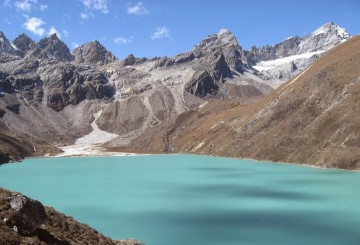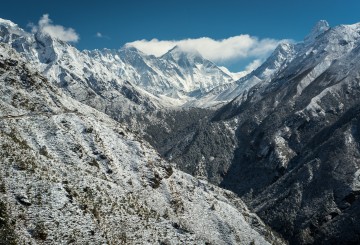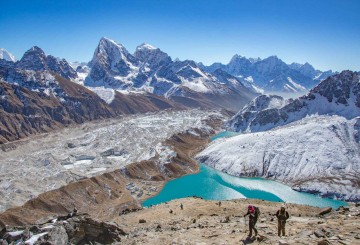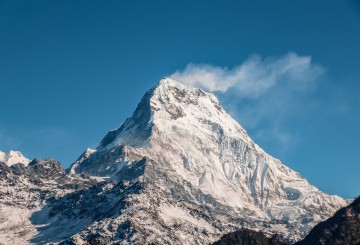Upon your arrival, our representative from Himalayan Sherpa Adventure awaits you at the airport. We will then proceed towards your hotel and brief you about Nepal and your trek. In the evening, we take you to a traditional Nepali restaurant for dinner where we will give you more information about the trek, your city sightseeing and also answer any questions you may have. Overnight in Hotel Mulberry. (B)

The Khopra Danda Panorama trek is newly developed trekking trail along with the Muldai Peak which gives us a proper introduction to the Annapurna area .
The Khopra Danda Panorama trek is newly developed trekking trail along with the Muldai Peak which gives us a proper introduction to the Annapurna
area . The trail consists of dense and diverse forests and beautiful scenery which never fails to amaze anyone . With the closer view of Massive mountains like Mount Dhaulagiri (8.167 m), Annapurna I (8.091 m), Annapurna II (7.937 m) Annapurna IV (7.525 m), Fishtail (6.997 m), Annapurna South (7.219 m)this trek is worth the walk . This trek is also focused for the beginners or who want to experience the real beauty of nature.
-
Day 1 - Arrival in Kathmandu
-
Day 2 - Sightseeing of Kathmandu Durbar Square, Pashupatinath and Swayambunath
Our guide will check your equipment in the morning to see if everything is fine. We will then start our sightseeing tour, heading to at least 3 major attractions in Kathmandu. Our sightseeing starts in the morning and should finish around 3 pm. Some major sites are Pashupatinath, Boudhanath, Swayambhunath and Kathmandu Durbar square. You will have the rest of the day free and also a chance to do any last minute shopping before your trek. Overnight in Hotel Mulberry. (B)
-
Day 3 : Drive or fly to Pokhara 8 driving hrs
This is the day the our journey towards our destinations starts . After having delicious breakfast we drive towards pokhara early in the morning starting at 7 am .It takes about 8 hours drive from kathmandu valley to pokhara . While on drive , we pass thorugh the hills amd we also get to view beautiful mountains lying towards western region of Nepal . On arrival to pokhara , we stay overnight in the hotel and in the meantime , we get few time for strolling around the lakeside . Incase we take a flight from kathmandu , the flight is around half and hour which gives us plenty of time to roam around the lakeside and also the mesmerizing view of the mountains from pokhara can be seen. (B)
-
Day 4: Ghandruk (2012m) 1.5 walking hour
After our breakfast, we meet at the hotel lobby and drive towards Kimche via the forest and hills of Sarangkot, Lumle, Hemja, Nayapul which takes about 3 - 4hours of drive. After reaching Kimche, we begin our trek for 1and half hour which brings us to Ghandruk - the largest settlement area of the Gurung people. TheGurungs are the main inhabitants of this land. The mountains on the opposite side and hills on the other side makes Ghandruk very aesthetic. We explore the areas around and visit the museum where Gurung culture is presented as well as the identity of the valiant Gurkhas. As it is in the lap of Annapurna region, major mountains like Gangapura, Machhapuchhre (Fishtail), Annapurna and other snow-capped mountains can be seen from here. We stay overnight at Ghandruk and indulge ourselves in the typical Gurung culture . (B,D)
-
Day 5: Tadapani (2630m) 5 walking hours
We start our day with a morning sunrise and close view of mountains in annapurna range . Today is the day we start our trek withour any modes of transportation. Tadapani which takes about 5 hours of walk across the beautiful and dense pine forest is a small village on the way with lodge houses . Overnight at Tadapani . (B,D)
-
Day 6: Dobato (3426m) 5 walking hrs
As our breakfast ends ,we head towards dobato . After we cross the beautiful forest after the trail of Dobato , our trail will lead to up and down then finally we shall arrive in Dobato. It requires 4 to 5 hours of walk from Tadapani . From there we shall get to see the amazing mountain views of Machhapuchre and Nilgiri Himal . Overnight at Dobato . (B,D)
-
Day 7 : Muldai Peak (3637m) and Bayeli Kharka 3-4 walking hrs
Today we wake up before sunrise as it is one of the major highlight of this trek . We get ready for muldai peak which is 200 m uphill from dobato and takes half and hour . Muldai view point is a newly discovered view point which lets us to have the surreal views of the mountain ranges .From there , Annapurna south , Dhaulagiri , Manaslu , Annapurna III , Nilgiri Himal and Machhapuchhre Himal can be seen very nearly .The trails to the view point can sometimes be slippery so we will walk with care and listen to guides instructions . The area of Muldai Peak is also used for cattle rearing . Cheese factory is also one of the main attraction of that area . Later we then move towards Bayeli Kharka through the narrow path above the hills which takes us about 3-4 hours . Overnight at Bayeli . (B,D)
-
Day 8 : Upper Chistibung (2.975m) – 4 walking hrs .
As we move forward to our next destination today - Upper Chistibung , we go through the hills and the Rhododendron forest which passes thorugh the grazing area of Lower Chistibung .This trail takes us about 4 hours . From Lower Chistibung, we cross the small streams and seasonal rivers which orinates from Annapurna . We then ascend towards Upper Chistibung which is a straight uphill .Overnight at Upper Chistibung . (B,D)
-
Day 9: Kopra Ridge (3.660m) -3 walking hrs .
Today we trek a steady climb from Upper Chistibung to reach Khopra ridge. As we go higher, our views get bigger and feels like within arms reach. The Annapurna South which lies only six kilometers away can be seen straight while Fang and Nilgiri mountains to the north while across the depths of the Kali Gandhi Valley,the Dhaulagiri range dominates the entire western skyline . Overnight at Kopra Ridge . (B,D)
-
Day 10. Kopra Ridge 3660m
Today we stay at the Kopra Ridge and explore Khare lake . The massive views of the mountains of Annapurna , Dhaulagiri , Manaslu ,Nilgiri himal dominates the panoramic view . From the top , we can also get to view the KaliGandaki Valley , we return to lodge for overnight. Overnight at Kopra Ridge .(B,D)
-
Day 11. Swanta Village (2200m) – 5 walking hrs
We enjoy the view and the sunrise of Khopra for the last time before leaving for Swanta village . We descend towards Swanta which is downhill following Chistibung that follows open ground passing through several buffalo pastures before entering thick oak and rhododendron forest that leads to the village of Swanta . Overnight at Swanta village . (B,D)
-
Day 12- Ulleri (2050m) 5-6 walking hrs
Today's walk from Swanta village to Ulleri is a descent walk .After breakfast , we descend to Swanta Khola through the Rhododendron forests and move towards Ulleri through different typical small villages as well as the grazing areas . This takes us about 5-6 hours of walking . Overnight at Ulleri . (B,D)
-
Day 13- Nayapul (2070m) 5 walking hrs and pokhara drive .
today is the last day of our trek , we take a long walk through Tirkhedhunge following Burungdi river past Hille and then to Birethanti and crossing the Modi riverwhich takes us to nayapul. We drive back to pokhara by private coach . Overnight at hotel in Pokhara (B).
-
Day 14 – Drive or fly back to Kathmandu . 8 driving hrs
Today we fly back to Kathmandu. As we reach Kathmandu in the afternoon, you have the rest of the day free. Overnight in Hotel Mulberry. (B)
-
Day 14 -Final Departure
We bid final farewell and drop you to the airport for final departure. (B)
What's Included ?
- All airport and hotel transfers
- 3 nights of hotel stay in Kathmandu on Bed & Breakfast basis
- Professionally trained and experienced tour guide and assistant guides
- Welcome/or Farewell Dinner
- Transportation in our private company vehicle
- Entrance permit and fees for all the Heritage sites
- All government and local taxes
What's Excluded ?
- Lunch and Dinner in Kathmandu
- Tips for guides and drivers
- Personal expenses
- Personal Insurance– travel and rescue insurance
- Airfare for international flights to and from Kathmandu
- Rescue services
- Nepalese visa fee
- Services not mentioned in the “Included” section
-
1. What is the best time to visit the Mustang region?
- Trekking in the Annapurna region is possible any time of the year. However, the most popular months for trekking are March, April, May and September, October, November, as these months are when the conditions are at their best. The spring and autumn tend to offer reasonable temperatures, clear skies, little to no rain and less chance of problematic snowfall. The average temperature around this time can range from a high around 25 degrees Celsius during the day to -15 degree Celsius at night. - December, January and February have colder temperatures and are less frequently travelled, but this should not deter you from making your trip to the Annapurna region during these months. The weather is very clear allowing you to see all the majestic mountains and most of the lodges and tea houses are open during this time. Best of all, you don’t have to deal with crowds and will have all the views to yourself!
-
2. How do you get to the Mustang region?
- The most popular and comfortable way to travel the Annapurna region is by a short 30 minutes flight from Kathmandu to Pokhara. From Pokhara, your team will drive to the starting point of the trek. - There is an alternative way to reach the Annapurna region by driving from Kathmandu 6 hours to Pokhara and then continue on to the starting point of the trek.
-
3. What is the luggage weight limit on flights to the Mustang region? Do we need to use duffle bags instead of regular luggage (with frame and roller)?
- The luggage weight limit on Annapurna flights are 15 kgs luggage and 5 kgs of hand carry (personal backpack). Before you start your trek, any unwanted luggages can be left in your hotel in Kathmandu. They will happily store it for you as you will be using the same hotel once your trek ends. - Yes, Duffle bags are better while in the trek because it can store more luggages and helps our porter to manage his load better.
-
4. Where will we be staying during our trek and what to expect from the accommodations? What kind of meals should I expect during the trek?
- We use only the best available accommodations during our treks which can include hotels, lodges and tea houses. Through our decades of experience, we have selected these places for their hygiene, amenities and client satisfaction. - During your trek the food choices might be more limited but you can always expect to find staples such as Dal Bhat, driving from Kathmandu 6 hours to Pokhara and then continue on to the starting point of the trek. 3. What is the luggage weight limit on flights to the Mustang region? Do we need to use duffle bags instead of regular luggage (with frame and roller)? - The luggage weight limit on Annapurna flights are 15 kgs luggage and 5 kgs of hand carry (personal backpack). Before you start your trek, any unwanted luggages can be left in your hotel in Kathmandu. They will happily store it for you as you will be using the same hotel once your trek ends. - Yes, Duffle bags are better while in the trek because it can store more luggages and helps our porter to manage his load better. 4. Where will we be staying during our trek and what to expect from the accommodations? What kind of meals should I expect during the trek? - We use only the best available accommodations during our treks which can include hotels, lodges and tea houses. Through our decades of experience, we have selected these places for their hygiene, amenities and client satisfaction. - During your trek the food choices might be more limited but you can always expect to find staples such as Dal Bhat, Noodles/ Chowmein, Fried rice, Sandwiches, Soups and French Fries. You can also find some vegetarian options as well. Another common popular Nepali dish is Momo (dumpling) which is very popular among the locals. Make sure to try one when you can.
-
5. Do we need to bring towel, toilet paper? Do all the hotels/ lodges on the route provide bathroom, hot shower and toiletries?
- Not all hotels/ lodges provide the items mentioned above. We recommend all our clients to bring their own toiletries, towel and toilet paper. Some lodges will provide attached bathroom with hot shower in your room while others will just provide a common bathroom. - The Annapurna region is still a remote mountain area that is mostly inaccessible by road. Hence, most of the goods and supplies in this region have to be carried by porters or mules. This makes it very difficult and expensive to provide all the facilities and please keep in mind that the higher you trek, the lesser facilities will be available.
-
6. Do we need to bring a sleeping bag and how warm will the room be?
- If you are traveling Manang region in autumn then you will most likely not need a sleeping bag but if you are visiting in winter around December and January then you will definitely want a sleeping bag with you. You will only need a sleeping bag in the higher elevation. Some lodges will give extra blankets but having your own sleeping bag is better. Your porter will put your sleeping bags in the duffle bags that he carries. If you don’t have a sleeping bag, you can always buy one in Kathmandu or rent through our company.
-
7. If we bring water bottle, where can we refill clean drinkable water?
- There used to be clean drinking water stations along the Manang a route but it seems that it has not been in operation for few years. We recommend to purchase a bottle mineral water and then to pour it onto your water bottle. Purchasing mineral water is very easy in the region but please know that the higher you go, so will the price of water. Also, please remember to recycle the plastic bottle or to give it to your guide or the lodge who will recycle it. It is not advisable to drink tap water. Please only use mineral bottle water or boiling water.
-
8. What about Laundry services and ATM’s along the trek route? Do they accept US dollar during the trek?
- Laundry machines are very rare in the mountains so please check with your guide for this service. Trekkers usually will not have big laundry during the trek and the little items such as socks and towels can be hand washed and later dried in the sun or by the fire. Most trekkers will only do their laundry once they are back in the capital Kathmandu where you can find plenty of Laundry services. - ATM’s are also available but only in certain places. So we urge you to use the ATM’s in Kathmandu where there are plenty and also their service fee will be comparatively less than in the mountains. - Yes they accept US dollar in the mountains but you will get a better deal if you exchange it in Kathmandu in the money exchange shops.
-
9. Is Internet/ Phone available up in the mountains? How do I charge my electronics?
- Internet is available but you will need to purchase it from the lodges. If you have bought a Nepali sim card then depending on the subscription, you can also get mobile data services but this is not a guarantee in all areas of the mountain. If your trek is above 4,000 meters high, we will send a company satellite phone along with the guide just in case of an emergency. - We recommend that our clients bring a power bank with them as electricity is limited especially at higher altitudes. We also found out through some of our clients that the solar powered power bank works well during the trek. So we recommend having both or at least a power bank. Some lodges will provide free electricity for you to charge your power bank and in higher altitudes you may have to pay to charge your electronics. - Tip: Batteries will lose their charge fast in colder temperatures. So we recommend tucking your electronics in your blanket/ sleeping bag or you might find your phone/ camera dead in the morning.
-
10. How common is Altitude Sickness? What to do if I get one?
- While trekking in the Himalayas, there is always a chance of dealing with Altitude sickness, but there are many things that you can do to minimize the risks. Our itinerary programs are carefully designed to ascend slowly and to provide proper acclimatization activities. Our experienced guides will remind you to stay hydrated and also look out for any early signs of distress. - Our guides receive training every year on Altitude sickness. If they think that you are showing symptoms of Altitude sickness, they might perform some simple diagnostic tests such as checking your oxygen level or asking you to walk in a straight line. The most effective treatment for altitude sickness is to descend to a lower elevation. However, in severe cases or certain conditions where descending is not possible our guides will coordinate an air evacuation as soon as possible. - Note: All of our guides are trained to administer oxygen. Every trek that goes above 4,000 meters will be equipped with an oxygen cylinder and a satellite phone incases of an emergency.
-
11. Do we need to carry travel insurance?
- Yes, travel insurance is mandatory while trekking with us. Please ensure that your insurance covers air evacuation service. While trekking to the Himalayas, there is a risk of dealing with an altitude sickness. In case of such emergencies, your air evacuation insurance will help you cover the cost or else the trekker will have to solely bear the costs. Our treks are organized in a very thoughtful manner so you will not have to face such adversities, but we always want our guests to travel in a peace of mind.
-
12. Do I need guide and porters for my trek?
- Yes, having a trekking guide and porter is necessary part of your journey. We have our team of guides and porters who work with us every season. Guides and Porters are an integral part of what we do so they are a vital team member. All of our guides are trained every year on leadership skills and basic first aid skills. Our porters are treated fair by limiting the weight they carry and paying well for the job they do. Trekking in high altitude requires good support team and it is very important to have trekking guide and porter along with you. We treat our porters fairly by only allowing 24 kgs of maximum load and limit per trekker a maximum of 12 kgs (26 lbs) to be carried. 1 porter can carry the load of 2 clients.
-
13. Do I have to tip my guide/ porter?
- Tipping culture is not mandatory but highly appreciated. Please keep in mind that our guides/porters will not ask you for anything– including tips. However, if you think that they have performed well while doing their job, and earn your appreciation or a "thank you", you may by all means tip them any amount you find reasonable. Typical guidelines on tipping the guides are $5 - $10 per day and for porters $3 - $5 per day. Most clients often leave tips in the last night of their trek.
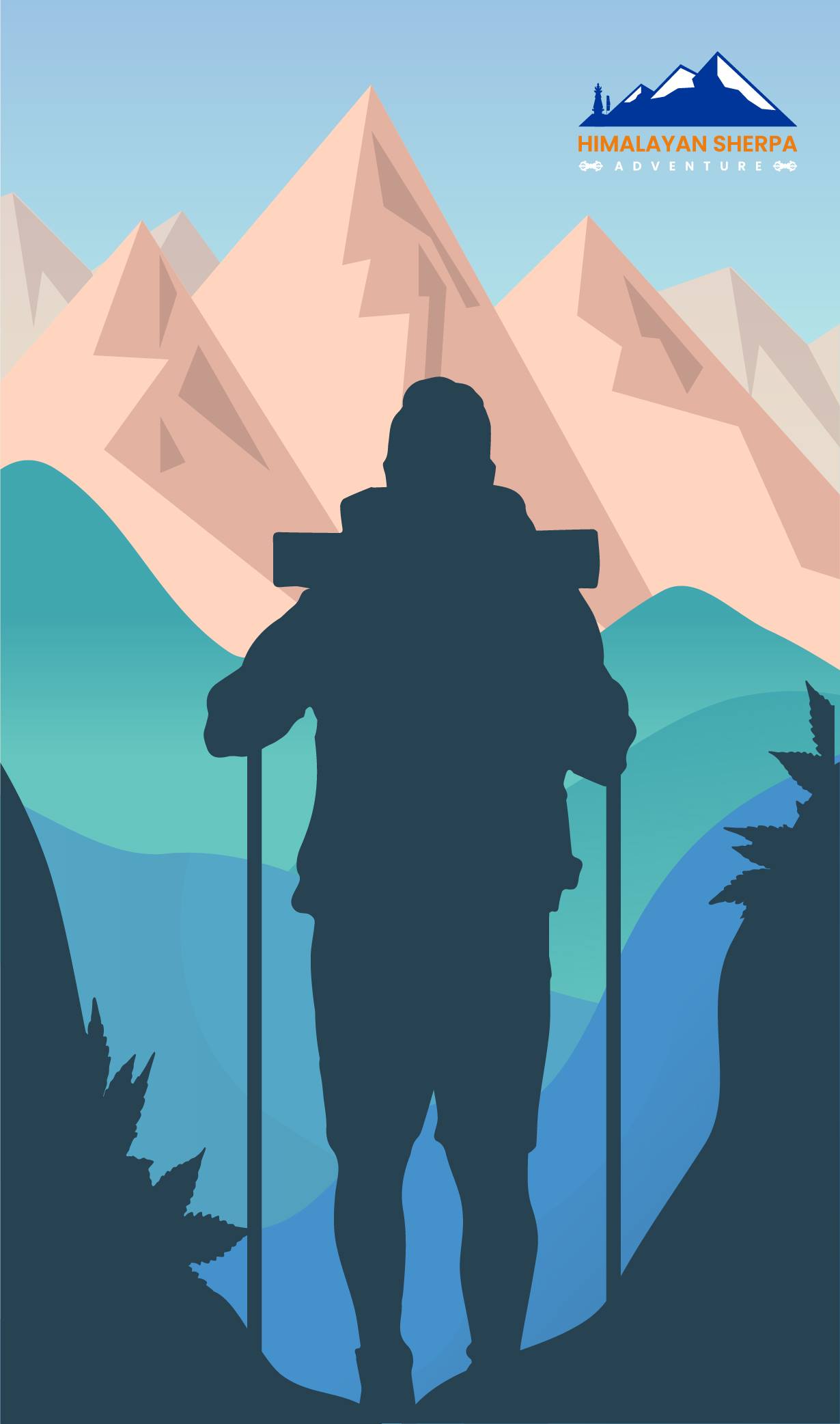
-
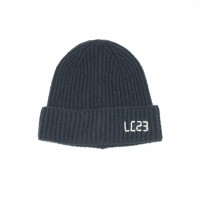
hats/beanie
-
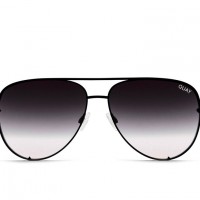
Sunglasses
-
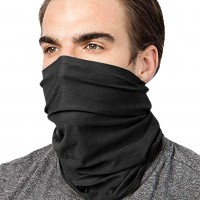
Scarf/Buff.
-

Candies/sweets
-
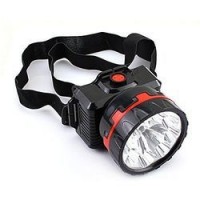
Headlights.
-
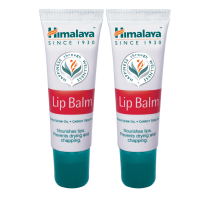
Lip balm
-
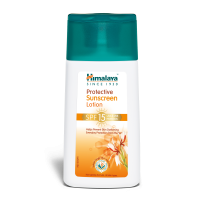
Sunscreen
-
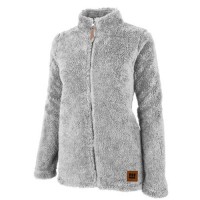
A warm fleece
-
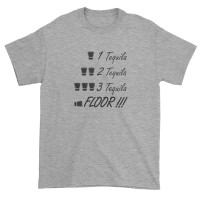
fewT shirts/ long and short sleeve shirts.
-

Daun Jacket
-
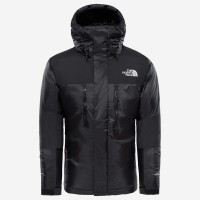
Windstopper jacket
-
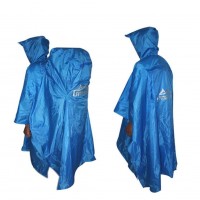
ponchos/Raincoat
-
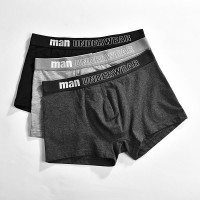
A few pieces innerwear.
-
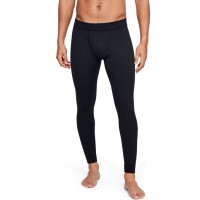
few pairs ski underwear
-
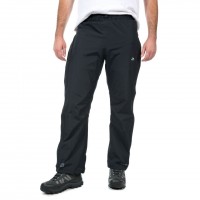
windproof trouser
-
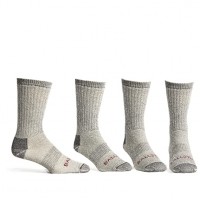
pairs of Trekking Socks
-
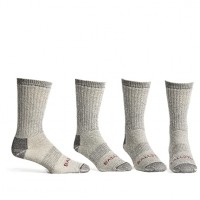
pairs woolen socks.
-

Slipper & Sandals
-
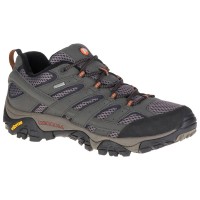
trekking shoes
-
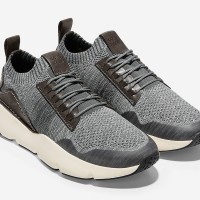
one comfortable shoes
-
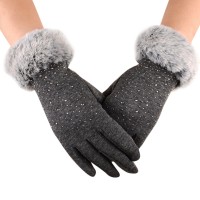
thin gloves & think gloves
-

backpack / Rucksack (waterproof)
-
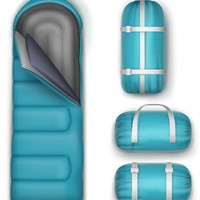
Sleeping bag -10* C
-

Duffel bag
-
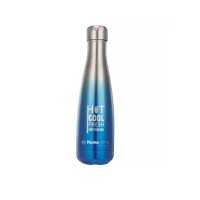
Water bottle
-
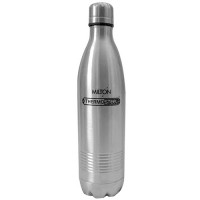
thermos
-
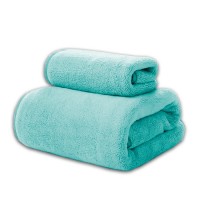
Towel & hand towel
-
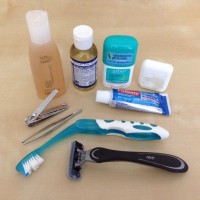
Toiletries
-

Trekking poles

You May Also Like


